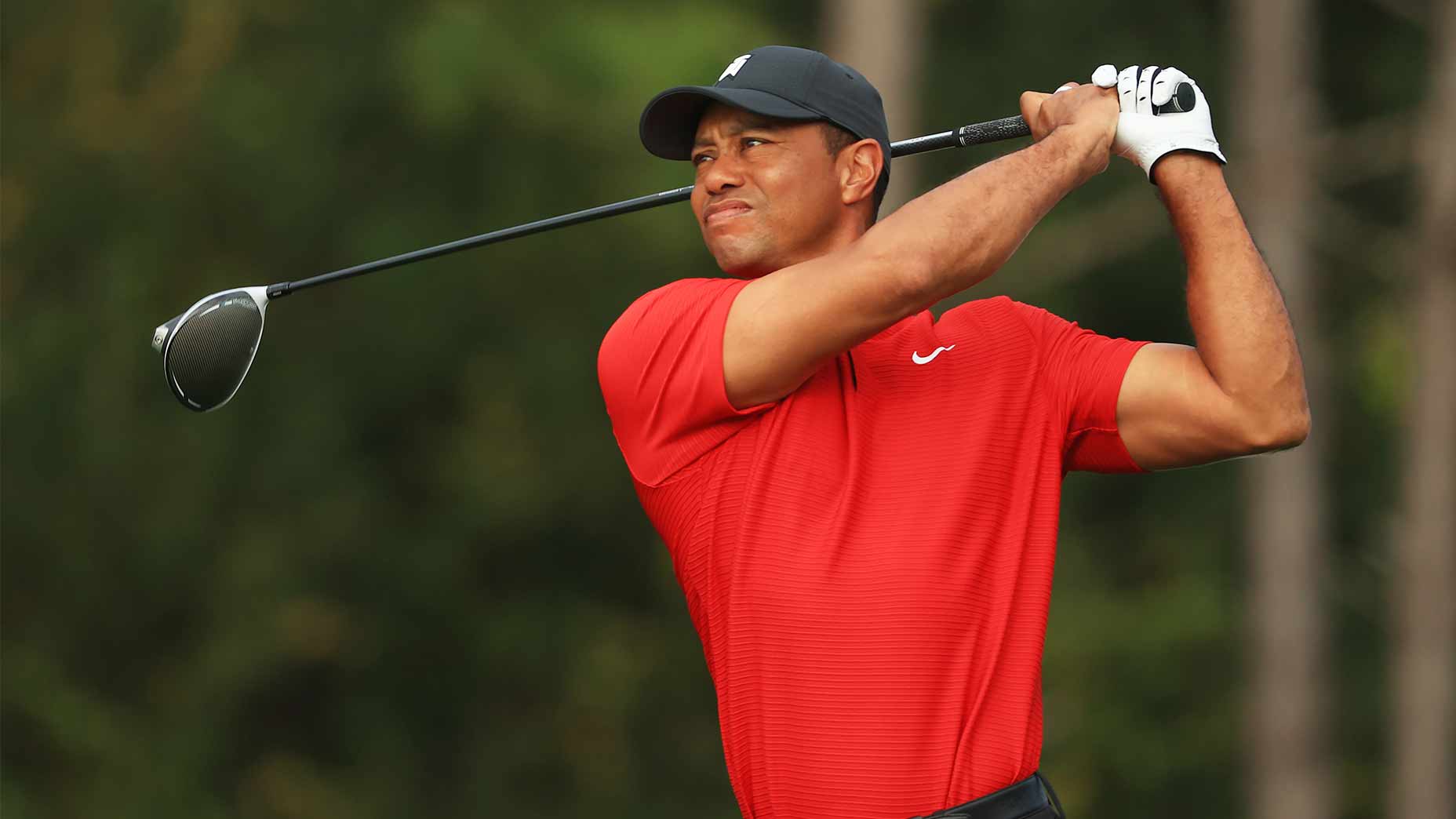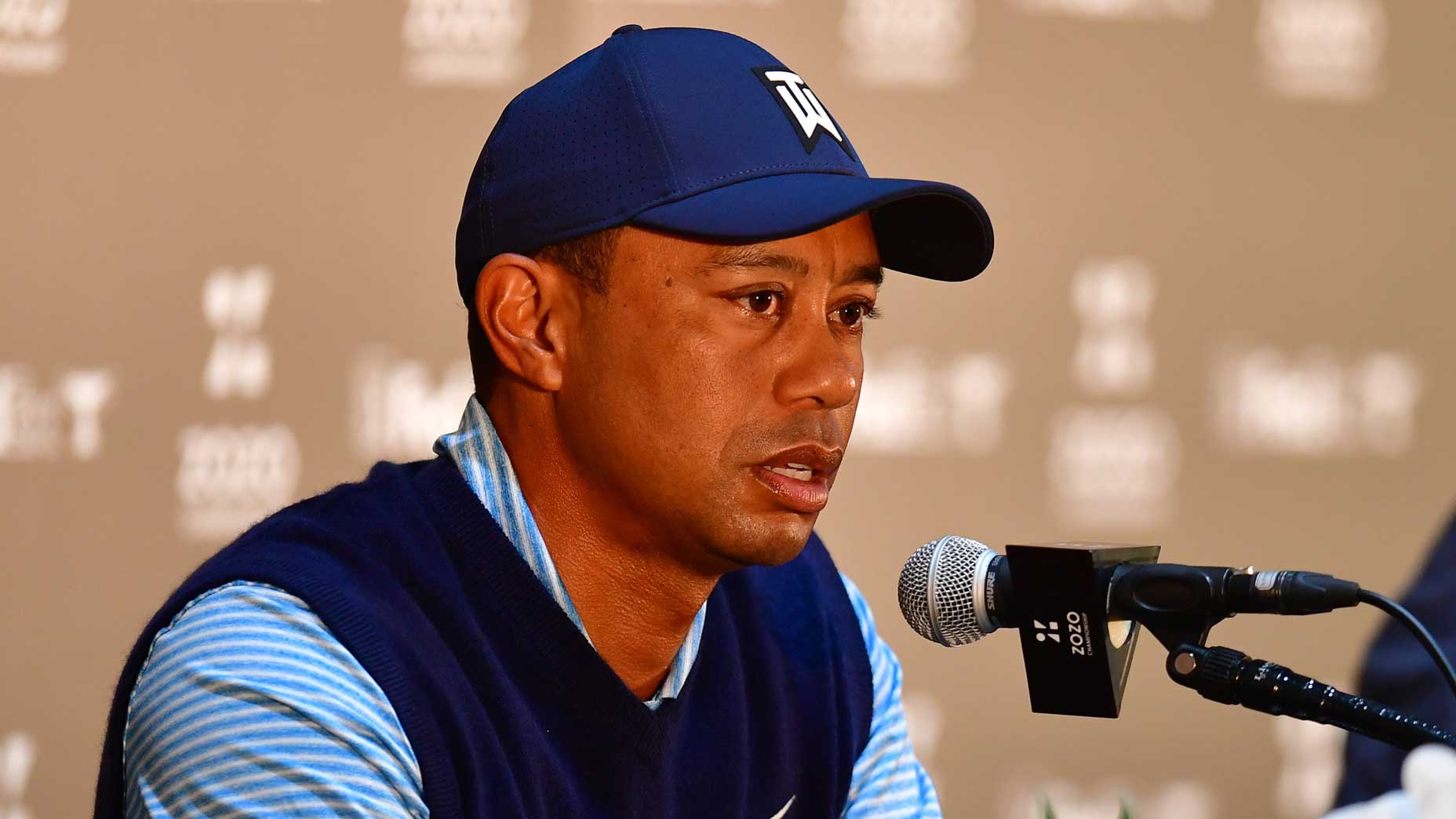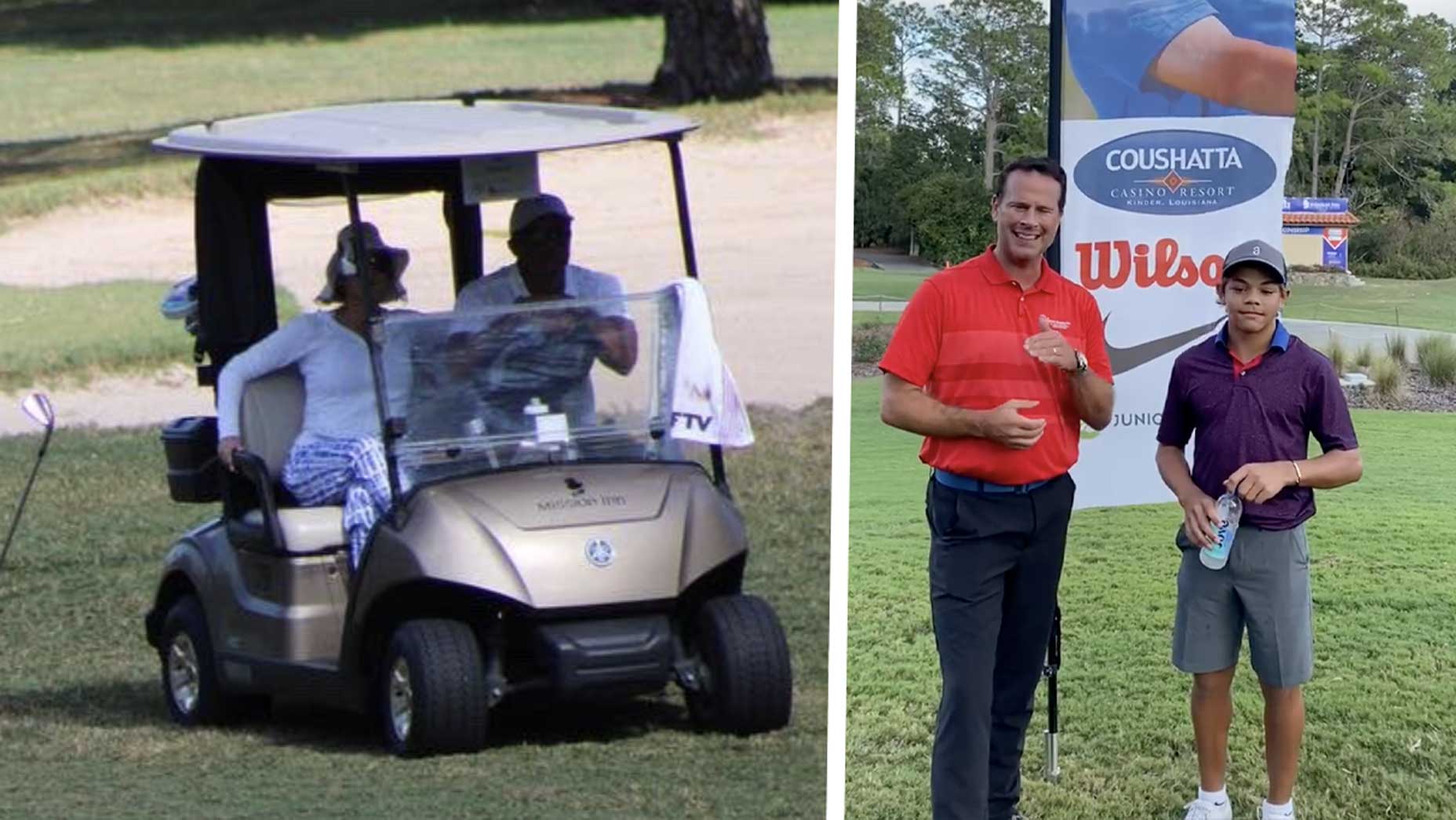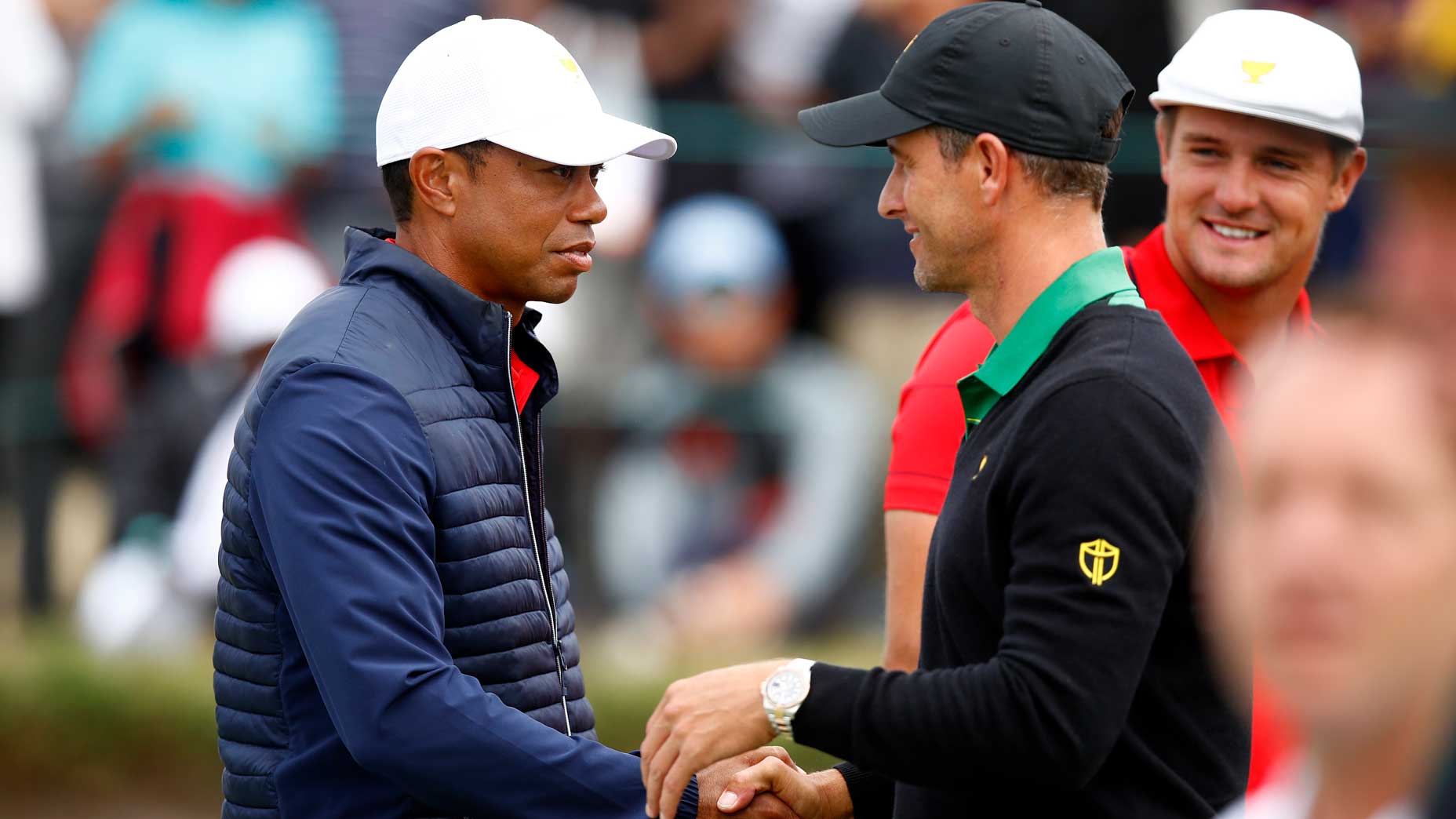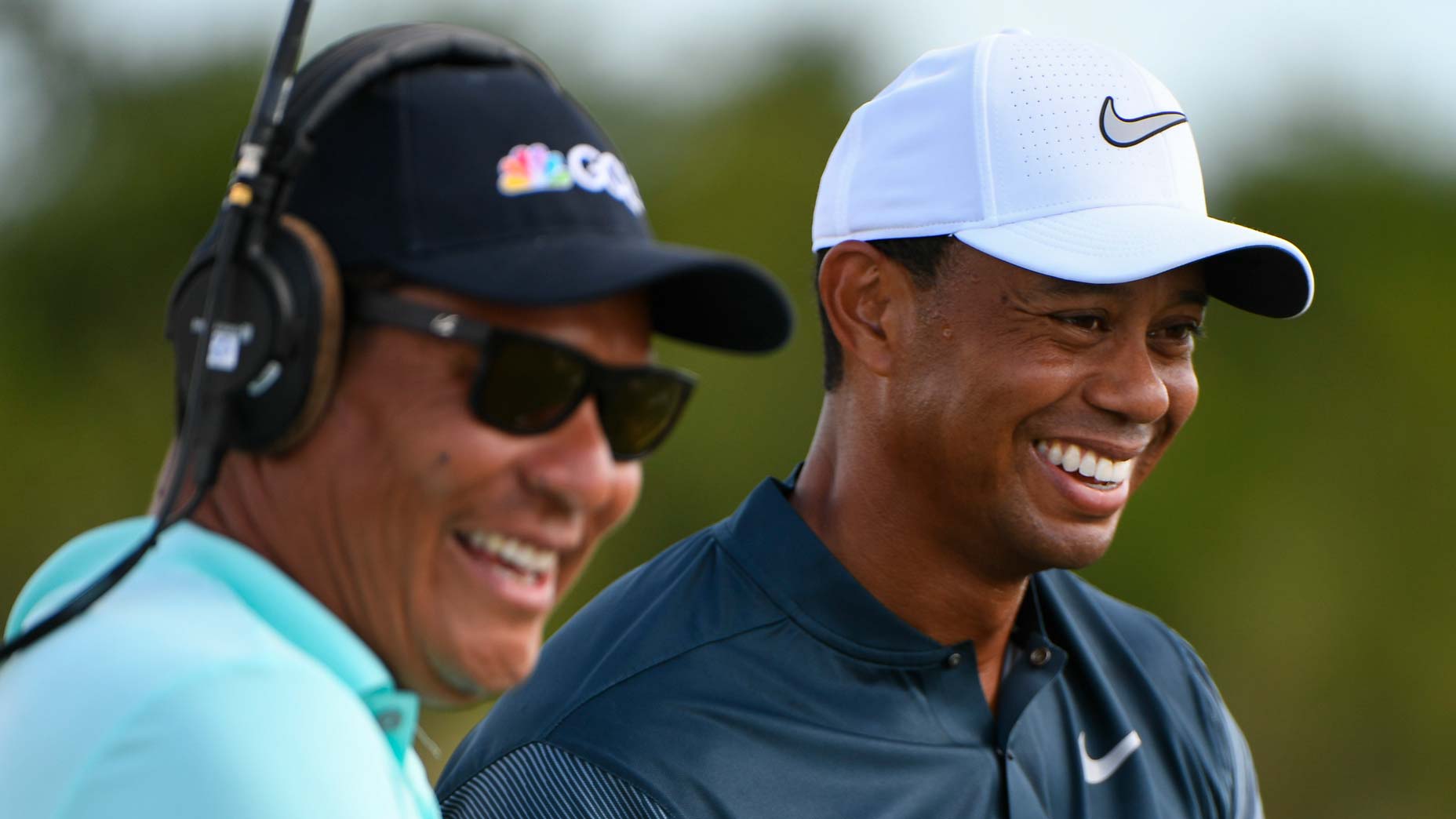Just how scary did things get for Tiger Woods in the wake of his single-car accident in late February? Scary enough that the odds of keeping his leg once stood “damn-near 50/50,” according to Tiger himself.
“There was a point in time when, I wouldn’t say it was 50/50, but it was damn-near there if I was going to walk out of that hospital with one leg,” Woods told Golf Digest in an interview released Monday.
The revelation comes on the heels of Woods’ first public comments in nearly nine months: a 40-minute interview in which Woods discussed his injuries, his path back to professional golf, and his advice for his son Charlie.
On the topic of the accident in Rolling Hills Estates, Calif., Woods had plenty to say — though the news might come as a stark dose of reality for many hoping for a similar comeback to the one Woods completed in 2018. The 15-time major champion seemed resigned to the fact that his body no longer has what it takes to compete regularly at a high level.
Tiger Woods to hold press conference Tuesday for first time since accidentBy: Sean Zak
“I don’t have to compete and play against the best players in the world to have a great life,” he said. “After my back fusion, I had to climb Mount Everest one more time. I had to do it, and I did. This time around, I don’t think I’ll have the body to climb Mount Everest, and that’s okay.”
Instead, Woods seemed to indicate his desire to follow in the footsteps of Ben Hogan, playing only a select number of tournaments at his own discretion. But that future is still a long way from the present.
“I think something that is realistic is playing the Tour one day — never full time, ever again — but pick and choose, just like [Ben] Hogan did,” he said. “Pick and choose a few events a year and you play around that, you practice around that, and you gear yourself up for that. I think that’s how I’m going to have to play it from now on. It’s an unfortunate reality, but it’s my reality. I understand it, and I accept it.”
Woods spoke extensively about the rehab process, including a prolonged stay in isolation in southern California, during which time he received near round-the-clock treatment.
“In a hotel room and I’m hooked up with wires everywhere and people poking and prodding me at 2-3 in the morning for more bloodwork,” he said. “It was just like, c’mon. You know? How much is enough?”

Once Woods recovered to the point that he was no longer at risk of amputation, his attention shifted to his hands — testing to see he’d kept his dexterity in the wake of the crash.
“I wanted to test and see that I still had my hands. So even in the hospital, I had Erica [Herman] and Rob [McNamara] throw me something,” he said. “Throw it over here, catch it over there. Then the nurse comes in. ‘What? I wasn’t doing anything?’ Nurse leaves, ‘Okay, let’s go!’ We were being kids, we were isolated, we were doing shenanigans. Just anything to pass the time.”
In March, he returned home to Florida after nearly a month in the hospital. He was kept inside for months, leaning on lessons from his father Earl to endure grueling rehab sessions.
“This is where my dad’s teachings came into play,” he said. “Being in the military, you don’t know how long a firefight’s going to take. It could last five seconds, it could last five hours. Some could go on for days at a time. You don’t know when the end is. That’s the hard part.”
Today, Tiger is walking again, unencumbered by crutches or braces; he’s even swinging the club, too. On Tuesday, Tiger takes another small step: appearing in front of the press for the first time at his tournament, the Hero World Challenge, in the Bahamas.
You can watch his full interview with Golf Digest here.
